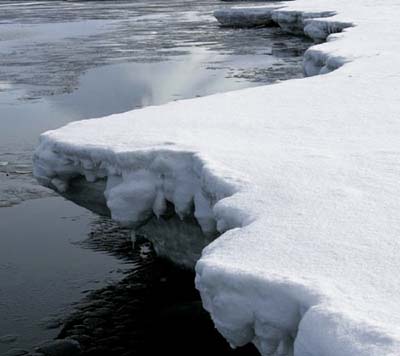NASA Study: Arctic is warming due to growing amount of aerosols in Atmosphere
 The US space agency NASA (National Aeronautics and Space Administration) has stated that it has noted aerosols affecting climate by reflecting or absorbing the radiation of Sun, in the atmosphere. In its recent study, NASA has articulated that Arctic has been warming since 1976, due to the increase of aerosols in Atmosphere.
The US space agency NASA (National Aeronautics and Space Administration) has stated that it has noted aerosols affecting climate by reflecting or absorbing the radiation of Sun, in the atmosphere. In its recent study, NASA has articulated that Arctic has been warming since 1976, due to the increase of aerosols in Atmosphere.
The NASA study has warned that the growing amount of aerosols could have damaging effects on climate, particularly if the amount of aerosols surpasses maximum-allowed limits. The sources of aerosols can be natural as well as human.
According to the team of researchers led by climate scientist Drew Shindell, the tiny airborne particles – aerosols get into the atmosphere from the natural or human sources such as industrial pollution, volcanoes and residential cook stoves. The aerosols can reflect or absorb the radiation of the Sun. They can also “seed” clouds, or even change a few of their physical properties, such as the reflectivity.
Speaking from NASA's Goddard Institute for Space Studies, in New York, Drew Shindell said, “There's a tendency to think of aerosols as small players, but they're not. Right now, in the mid-latitudes of the Northern Hemisphere and in the Arctic, the impact of aerosols is just as strong as that of the greenhouse gases. We will have very little leverage over climate in the next couple of decades if we're just looking at carbon dioxide. If we want to try to stop the Arctic summer sea ice from melting completely over the next few decades, we're much better off looking at aerosols and ozone.”
Shindell added, “This is an important model study, raising lots of great questions that will need to be investigated with field research,” Harvard University atmospheric chemist Loretta Mickley, who was not involved with the current study, added. “It appears that aerosols have quite a powerful effect on climate, but there's still a lot more that we need to sort out.”
In the study reported in the journal Nature Geoscience, the researchers have reported that they used a coupled ocean-atmosphere model to study the climatic effects of changes in levels of carbon dioxide, ozone and aerosols. The researchers have reported that two main components of aerosols are sulfates and black carbon, coming from human activity; Sulfates come directly from the burning of coal. The researchers have concluded that the increasing amount of aerosols could have dangerous effects on climate.